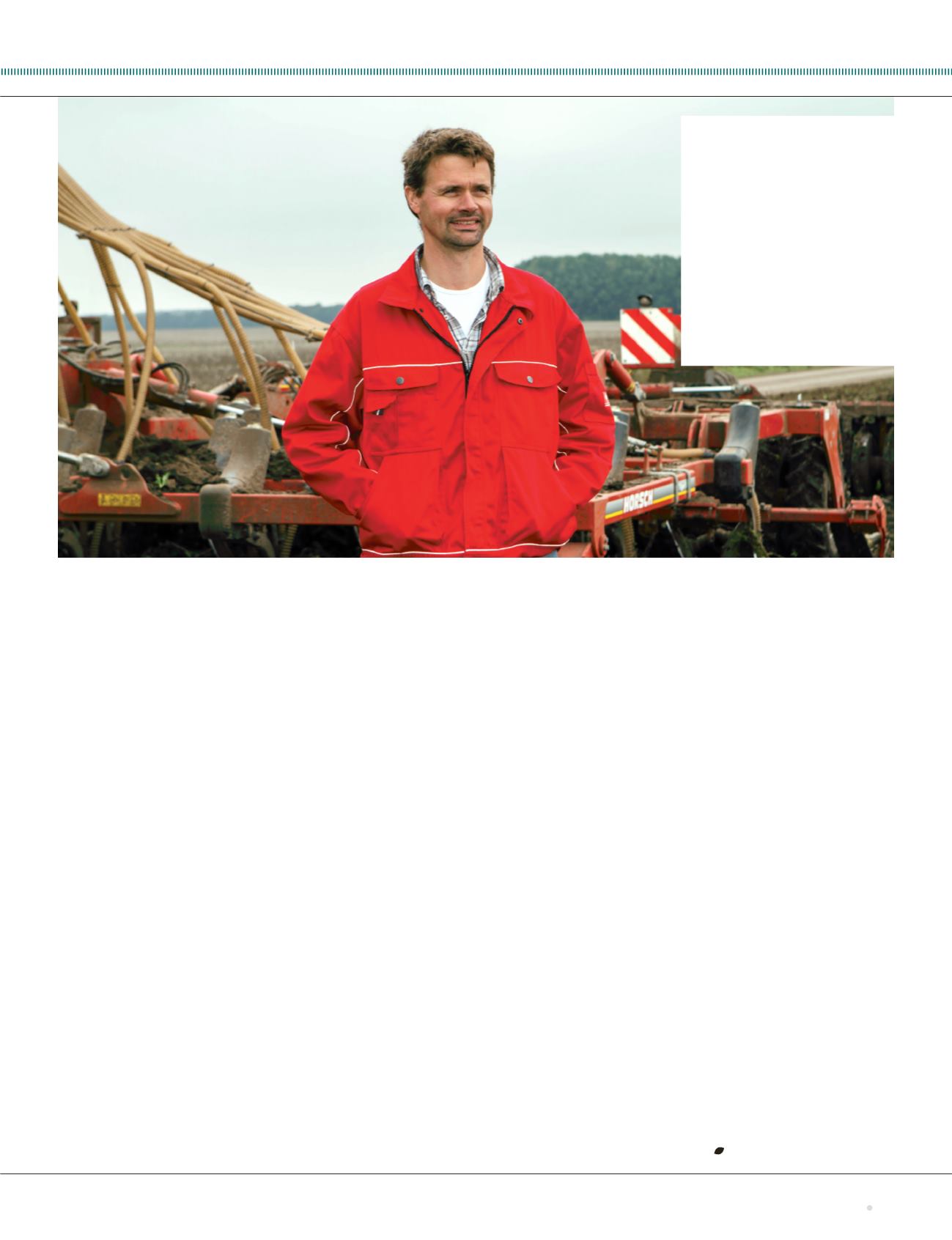

The Food Issue
2016
grainswest.com25
F
arming in Ukraine has the potential for
huge growth in the coming years. No
one knows this better than Dutch farmer
Kornelis (Kees) Huizinga, who works
some 40,000 acres of prime farmland in
Ukraine.
After graduating fromWageningen
University in the Netherlands in 2002,
Huizinga researched farming possibilities
in Ukraine. What makes farming in
Ukraine so alluring? It’s a combination
of the availability of land and the
quality of the soil. Agricultural land in
Ukraine is rented using farmland lease
agreements. After the fall of the Soviet
Union, all workers and pensioners from
the collective farms received a 6.6-acre
parcel of land. Huizinga leases land
from locals who aren’t farming the land
themselves.
Huizinga said his company has 5,500
land lease contracts of the 6.6-acre
sections. He rents another 4,000 acres
from the state. The management of so
many contracts requires the dedication of
six full-time employees (in total, Huizinga
employs 350 farmworkers). Currently,
farmland is not for sale in Ukraine, but the
government is working to make it happen.
Land costs about $65 per acre to lease.
Ukraine is home to about 30 per cent
of Earth’s black soil, called “chernozem,”
and it’s been virtually untouched by
intensive and conventional agricultural
practices. This has left the soil with high
levels of organic matter. As a result, it is
very fertile and produces high agricultural
yields. However, Huizinga, who grows
winter wheat, barley, canola, sugar beets,
corn, soybeans and sunflowers, knows
that yields in Ukraine could be better.
Although the soil is rich, he thinks growers
couldmake better use of technology and
logistics to improve planting accuracy,
efficiency and overall yields.
Along with the commodity crops,
Huizinga also grows onions, carrots and
cabbage. On the livestock side, he milks
800 cows and raises some 750 pigs.
The challenges and opportunities
in Ukraine are endless. When asked
about the biggest challenge he faces
today, Huizinga mentioned fluctuating
commodity prices. “We were already
used to high commodity prices, and now
with the lower prices it takes a bit longer
to pay back some loans and execute new
plans,” he said. “So it does not go fast
enough.”
As of Jan. 1, 2016, Moscow introduced
a one-year ban on agricultural produce,
food and raw materials from all countries
that joined sanctions against Russia.
Russian military intervention has led to a
ban on food imports from Ukraine, which
has taken a toll on farmers’ income and
led to higher taxes (war taxes).
Despite the challenges, Huizinga is
positive about the future. In addition to
the opportunity to increase yields, he
thinks there is also great potential in the
processing of commodities. Huizinga said
that, despite the Russian bans, there are
still plenty of export opportunities. He
also thinks Ukrainians could be producing
energy frommanure, straw and other
waste materials. “Being dependent on
Russia is dangerous,” he said.
In the future, Huizinga would like to
implement controlled traffic farming, a
technique where tractors use GPS to
follow their original tracks in the field.
Doing so limits soil compaction and
erosion. He’d like to grow the dairy
to 3,500 milking cows, and increase
vegetable production to 6,200 acres.
In the long-term, Huizinga also plans to
increase the number of pigs he raises
and get into the business of energy
production.
Ukraine
’
s
utility
THE ALLURE OF FARMING IN
EASTERN EUROPE IS ALL ABOUT
THE SOIL
BY MELANIE EPP
Photo: Courtesy of Kees Huizinga









